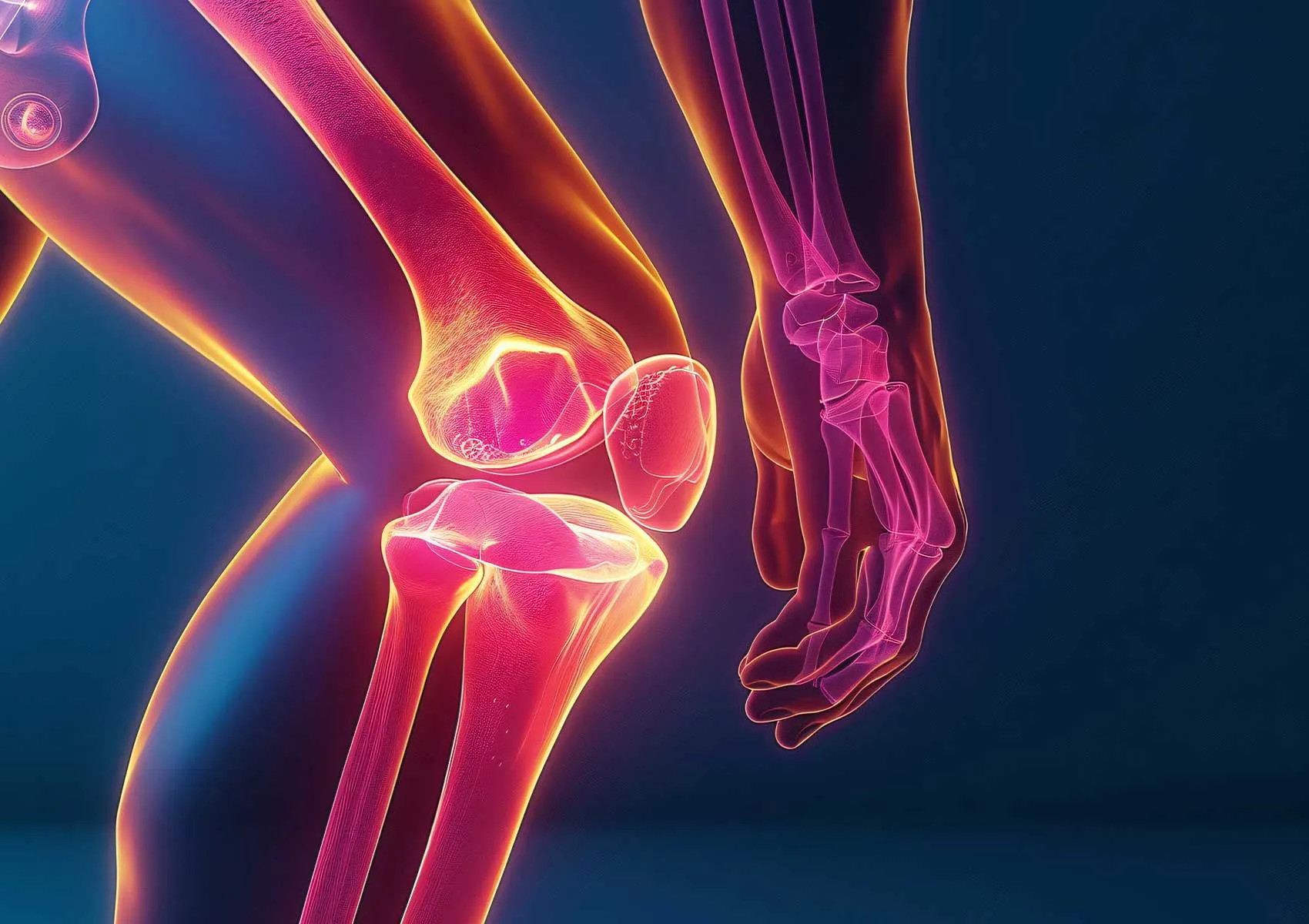Can You Have Knee Pain Without a Meniscus Tear?
This article examines the causes of knee pain that are unrelated to meniscus tears, including how to diagnose and treat these conditions effectively.
Knee pain is a common musculoskeletal complaint that affects people of all ages and activity levels. While meniscal tears are often associated with knee pain, they are not the only cause. Many individuals assume that pain in or around the knee must be due to a meniscus injury, yet several other conditions can produce similar symptoms such as pain, swelling, or a sensation of locking—without any actual meniscal damage.
This article explores the possible causes of knee pain in the absence of a meniscus tear, explains the role of the menisci, outlines differential diagnoses, and describes effective diagnostic and treatment approaches.
What Is the Meniscus and What Does It Do?
The menisci are two crescent-shaped fibrocartilage structures located between the femur (thighbone) and tibia (shinbone) in each knee: the medial meniscus (inner side) and the lateral meniscus (outer side).
Their key functions include:
- Distributing load across the joint
- Providing stability during movement
- Protecting the articular cartilage from wear
- Acting as shock absorbers against compressive forces
Although damage to the meniscus can cause significant discomfort, knee pain is not always a result of meniscal pathology.
Is It Possible to Have Knee Pain Without a Meniscus Tear?
Yes—knee pain can occur without a meniscus tear. The knee joint is a complex structure involving bones, ligaments, tendons, cartilage, synovium, and bursae. Any of these structures can become inflamed or injured, resulting in pain.
Common Causes of Knee Pain Without Meniscal Injury:
1. Patellofemoral Pain Syndrome (PFPS)
Often seen in young adults and athletes, PFPS is characterized by pain between the kneecap and the femur. Symptoms worsen with stair climbing, squatting, or prolonged sitting.
2. Chondromalacia Patella
This condition involves the softening or degeneration of the cartilage on the underside of the kneecap, leading to pain during knee movements.
3. Synovitis (Inflammation of the Synovial Membrane)
This results in swelling, warmth, and pain due to inflammation of the inner lining of the joint. It may mimic meniscus-related symptoms.
4. Plica Syndrome
Embryological remnants of synovial folds, particularly the medial plica, can become irritated and cause pain on the inner side of the knee, often confused with a meniscal tear.
5. Osteoarthritis
Degeneration of joint cartilage and underlying bone can cause chronic pain and stiffness, especially in older adults—even when the meniscus is intact.
6. Bursitis
Inflammation of the small fluid-filled sacs (bursae) around the knee joint—such as prepatellar or pes anserine bursitis—can produce pain similar to meniscal injuries.
7. Ligament Injuries
Partial sprains or overstretching of ligaments like the medial collateral ligament (MCL) or anterior cruciate ligament (ACL) can cause localized pain without a meniscal tear.
8. Tendon and Muscle Strain
Tendinopathies or muscle overuse (quadriceps, hamstring, iliotibial band) can lead to lateral or medial knee pain.
How to Differentiate Meniscus Tears from Other Conditions
Identifying the true cause of knee pain requires a detailed clinical examination and appropriate imaging studies.
Clinical Evaluation:
- Detailed medical history and activity level
- Pain location and relation to movement
- Joint range of motion and specific physical tests (e.g., McMurray’s, Apley’s test)
Imaging Techniques:
- X-rays: Useful for assessing bone alignment and signs of osteoarthritis
- MRI: The gold standard for evaluating soft tissue structures including the menisci, cartilage, ligaments, synovium, and bursae
A normal meniscus on MRI doesn’t mean the joint is pain-free—many other soft tissue abnormalities may exist.
Conditions That Can Mimic Meniscus Tears
Several conditions may be mistaken for meniscal injuries:
- Plica syndrome
- Patellofemoral pain
- Early osteoarthritis
- Synovial inflammation
- Tendon pathologies
Misdiagnosis can lead to unnecessary treatments or even surgery. Accurate diagnosis is key to effective care.
Effective Treatment Without Meniscus Surgery
When knee pain is not caused by a meniscal tear, conservative treatment is often sufficient:
- Physical therapy and strengthening exercises
- Anti-inflammatory medications
- Ice application and compression
- Manual therapy and kinesio taping
- Injection therapies (hyaluronic acid, PRP, etc.)
Many patients experience significant improvement with non-surgical interventions.
FAQ
-
Can you have knee pain without a torn meniscus?
Yes, many conditions such as PFPS, bursitis, and chondromalacia can cause pain without meniscal damage.
-
My MRI shows a normal meniscus—why does my knee still hurt?
Other tissues like cartilage, tendons, or synovium may be inflamed or injured.
-
What conditions mimic meniscus tear symptoms?
Plica syndrome, patellar issues, osteoarthritis, and ligament injuries can produce similar symptoms.
-
How are non-meniscal knee pains treated?
Typically through physical therapy, medication, and sometimes injection therapies.
-
Is surgery necessary if there’s no meniscus tear?
No. Non-surgical management is usually effective if meniscal integrity is preserved.

